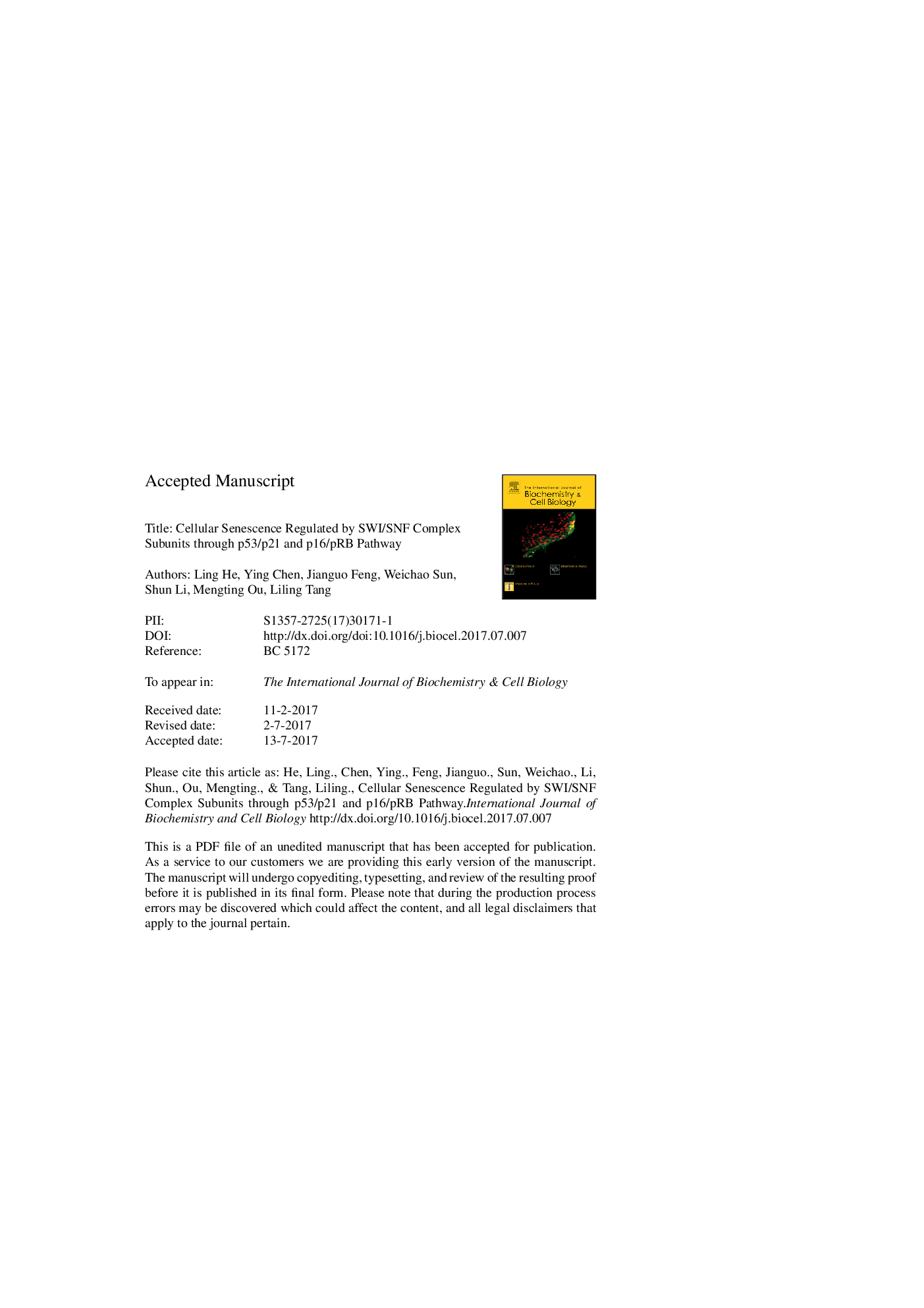| Article ID | Journal | Published Year | Pages | File Type |
|---|---|---|---|---|
| 5511271 | The International Journal of Biochemistry & Cell Biology | 2017 | 27 Pages |
Abstract
SWI/SNF complex is an evolutionarily well-conserved chromatin-remodeling complex, which is implicated in the nucleosomes removing or sliding, impacting on the DNA repair, replication and genes expression regulation. The SWI/SNF complex consists up to 12 protein subunits. The catalytic subunits are BRG1 or BRM, which are exclusive ATPase subunits. BRG1 has been reported to play an important role in cellular senescence. However, The function of non-catalytic subunits involved in cellular senescence is rarely investigated. Therefore, we focused on the senescence regulation roles of SWI/SNF non-catalytic subunits in cellular senescent model induced by H2O2. H2O2 treatment was used to induce cellular senescence models in vitro. Screening the candidate subunits involved in this process by comparing the expression levels of SWI/SNF subunits with/without H2O2 treatment. Over-expression and knockdown the candidate subunits were utilized to investigate the functions and mechanism of the subunits involved in senescence regulation. The expressions of BAF57, BAF60a and SNF5 were changed significantly after H2O2 treatment. Overexpression of the three subunits separately induced cell growth arrest in both HaCaT and GLL19 cells, while knockdown of the subunits separately eased the senescence induced by H2O2 treatment. Results further showed that BAF57, BAF60a and SNF5 regulated cellular senescence via both p53/p21 and p16/pRB pathways, and the three subunits all had a directly interaction with p53. These results indicated that BAF57, BAF60a and SNF5 might act as novel pro-senescence factors in both normal and tumor human skin cells. Therefore, inhibiting expression of the three factors might delay the cellular senescence process.
Keywords
stress induced premature senescencePVDFSWItch/Sucrose NonFermentableDDRSenescence associated-β-galactosidaseGFPMSP58MRTSAHFLC50SA-β-galDMSOSWI/SNFSWI/SNF complexImmunoprecipitationmalignant rhabdoid tumorDimethyl sulfoxiderat mesenchymal stem cellsSipsLethal concentration 50non-specificDNA damage responsegreen fluorescent proteinPropidium iodidePolyvinylidene fluorideSenescenceReplicative senescence
Related Topics
Life Sciences
Biochemistry, Genetics and Molecular Biology
Biochemistry
Authors
Ling He, Ying Chen, Jianguo Feng, Weichao Sun, Shun Li, Mengting Ou, Liling Tang,
